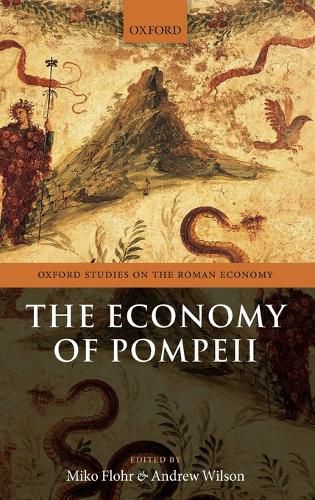Readings Newsletter
Become a Readings Member to make your shopping experience even easier.
Sign in or sign up for free!
You’re not far away from qualifying for FREE standard shipping within Australia
You’ve qualified for FREE standard shipping within Australia
The cart is loading…






This volume presents fourteen papers by Roman archaeologists and historians discussing approaches to the economic history of Pompeii, and the role of the Pompeian evidence in debates about the Roman economy. Four themes are discussed. The first of these is the position of Pompeii and its agricultural environment, discussing the productivity and specialization of agriculture in the Vesuvian region, and the degree to which we can explain Pompeii’s size and wealth on the basis of the city’s economic hinterland. A second issue discussed is what Pompeians got out of their economy: how well-off were people in Pompeii? This involves discussing the consumption of everyday consumer goods, analyzing archaeobotanical remains to highlight the quality of Pompeian diets, and discussing what bone remains reveal about the health of the inhabitants of Pompeii. A third theme is economic life in the city: how are we to understand the evidence for crafts and manufacturing? How are we to assess Pompeii’s commercial topography? Who were the people who actually invested in constructing shops and workshops? In which economic contexts were Pompeian paintings produced? Finally, the volume discusses money and business: how integrated was Pompeii into the wider world of commerce and exchange, and what can the many coins found at Pompeii tell us about this? What do the wax tablets found near Pompeii tell us about trade in the Bay of Naples in the first century AD? Together, the chapters of this volume highlight how Pompeii became a very rich community, and how it profited from its position in the centre of the Roman world.
$9.00 standard shipping within Australia
FREE standard shipping within Australia for orders over $100.00
Express & International shipping calculated at checkout
This volume presents fourteen papers by Roman archaeologists and historians discussing approaches to the economic history of Pompeii, and the role of the Pompeian evidence in debates about the Roman economy. Four themes are discussed. The first of these is the position of Pompeii and its agricultural environment, discussing the productivity and specialization of agriculture in the Vesuvian region, and the degree to which we can explain Pompeii’s size and wealth on the basis of the city’s economic hinterland. A second issue discussed is what Pompeians got out of their economy: how well-off were people in Pompeii? This involves discussing the consumption of everyday consumer goods, analyzing archaeobotanical remains to highlight the quality of Pompeian diets, and discussing what bone remains reveal about the health of the inhabitants of Pompeii. A third theme is economic life in the city: how are we to understand the evidence for crafts and manufacturing? How are we to assess Pompeii’s commercial topography? Who were the people who actually invested in constructing shops and workshops? In which economic contexts were Pompeian paintings produced? Finally, the volume discusses money and business: how integrated was Pompeii into the wider world of commerce and exchange, and what can the many coins found at Pompeii tell us about this? What do the wax tablets found near Pompeii tell us about trade in the Bay of Naples in the first century AD? Together, the chapters of this volume highlight how Pompeii became a very rich community, and how it profited from its position in the centre of the Roman world.